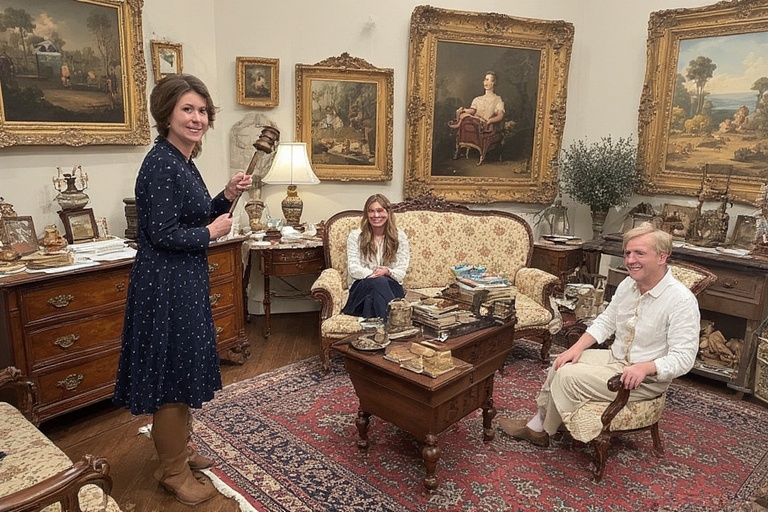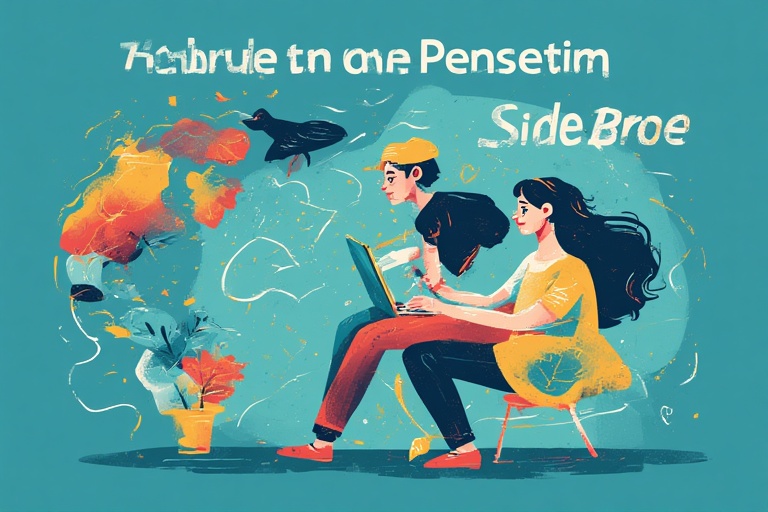
The Enchanting World of Kuromi: Sanrio’s Punk Princess
Kuromi, the mischievous yet lovable Sanrio character, has captured hearts worldwide with her punk-inspired charm and rebellious spirit. Unlike the soft pastel aesthetic of many Sanrio icons, Kuromi stands out with her black jester hat, pink skull accessory, and devilish tail. Since her debut in 2005, Kuromi has evolved from a playful antagonist to a global symbol of individuality and self-expression. This article dives deep into Kuromi’s origins, personality, cultural impact, and why she continues to resonate with fans of all ages.
Table of Contents
Who Is Kuromi?
Kuromi is a white rabbit character created by Sanrio, the Japanese company behind Hello Kitty and My Melody. Introduced as My Melody’s rival in the anime Onegai My Melody, Kuromi embodies a punk-rock vibe that contrasts with My Melody’s sweet, pink persona. Kuromi’s signature look includes a black jester hat adorned with a pink skull that changes expressions to match her mood, a black tail, and a playful smirk that hints at her cheeky nature. Her birthday, fittingly, is Halloween (October 31), aligning with her edgy, spooky charm.
Kuromi’s personality is a delightful mix of naughty and nice. She’s mischievous, loves playing pranks, and often stirs up trouble in Mari Land, the fictional world she shares with My Melody. Yet, beneath her tough exterior, Kuromi has a soft side—she’s loyal to her friends, dreams of romance, and even keeps a diary to jot down her adventures. This duality makes Kuromi relatable to fans who embrace their quirks and imperfections.
The Origins of Kuromi
Sanrio introduced Kuromi in 2005 to add a fresh dynamic to the My Melody universe. While My Melody represented innocence and kindness, Kuromi was designed as her opposite—a character who embraced rebellion and individuality. Her creation was inspired by the growing popularity of alternative subcultures, such as punk and goth, in Japan during the early 2000s. Kuromi’s aesthetic draws from these influences, blending them with Sanrio’s signature cuteness to create a character that feels both bold and approachable.
Kuromi’s name is derived from the Japanese word “kuro,” meaning black, which reflects her dark-themed design. Unlike traditional villains, Kuromi isn’t evil—she’s simply misunderstood, often acting out because she feels overshadowed by My Melody’s perfection. This backstory resonated with fans, who saw Kuromi as a symbol of embracing one’s unique identity rather than conforming to societal expectations.
Kuromi’s Evolution in Media
Kuromi’s journey began in Onegai My Melody, where she was portrayed as a troublemaker trying to thwart My Melody’s plans. Over time, her character softened, especially in series like Hello Kitty and Friends Supercute Adventures, where Kuromi becomes a friend to Hello Kitty and others. This shift highlights Kuromi’s versatility—she can be a villain, a rival, or a buddy, depending on the story.
Kuromi has also starred in her own series, Kuromi’s Pretty Journey, where she travels the world in search of her sister, Romina. The show showcases Kuromi’s adventurous spirit and knack for getting into humorous predicaments. Whether she’s chasing romance or leading her gang, Kuromi’s 5, her charisma shines through, making her a fan favorite across generations.
Kuromi’s presence extends beyond animation. She appears in video games, music videos, and even virtual concerts, where her punk-inspired outfits and confident attitude steal the show. Sanrio’s ability to adapt Kuromi for different platforms has cemented her status as a modern icon.
Why Kuromi Resonates with Fans
Kuromi’s appeal lies in her authenticity. In a world that often celebrates perfection, Kuromi embraces her flaws and encourages fans to do the same. Her punk aesthetic resonates with those who feel like outsiders, while her girly side appeals to fans who love Sanrio’s classic charm. Kuromi’s ability to balance these contrasts makes her a role model for self-acceptance.
Kuromi also taps into the global rise of alternative fashion and subcultures. Her black-and-pink color scheme, skull motifs, and rebellious attitude align with trends like emo, goth, and scene, which have seen a resurgence in recent years. Fans express their love for Kuromi through cosplay, fan art, and custom merchandise, creating a vibrant community known as “Kuromies.”
Moreover, Kuromi’s relatable personality draws fans in. She’s not afraid to speak her mind, chase her dreams, or make mistakes—qualities that inspire people to embrace their individuality. Whether it’s through her diary entries or her playful antics, Kuromi feels like a friend who understands the ups and downs of life.
Kuromi’s Cultural Impact
Kuromi’s influence extends far beyond Sanrio’s merchandise. In 2021, Sanrio launched the “KUROMIfy the World Project,” a campaign to spread Kuromi’s message of confidence and creativity globally. The project includes collaborations with fashion brands, artists, and influencers, showcasing Kuromi’s versatility as a cultural icon.
Kuromi has inspired countless products, from plush toys and stationery to clothing and cosmetics. High-profile collaborations with brands like Loungefly, Hot Topic, and even luxury designers have made Kuromi a staple in both mainstream and niche markets. Her image graces everything from backpacks to nail polish, appealing to fans who want to incorporate Kuromi’s style into their daily lives.
On social media, Kuromi dominates platforms like Instagram and TikTok, where fans share Kuromi-themed outfits, makeup looks, and dance videos. Hashtags like #Kuromi and #Kuromies have millions of views, reflecting her massive online presence. Kuromi’s ability to connect with fans digitally has helped her stay relevant in an ever-changing pop culture landscape.
Kuromi in Fashion and Merchandise
Kuromi’s punk-inspired aesthetic has made her a fashion icon. Her black jester hat, pink skull, and bold color palette inspire clothing lines that blend cute with edgy. Retailers offer Kuromi-themed hoodies, dresses, and accessories that cater to fans who want to channel her rebellious vibe. Limited-edition Kuromi sneakers and jewelry have also become collector’s items, showcasing her influence in streetwear and high fashion.
Sanrio’s Kuromi merchandise is designed with fans in mind, offering something for everyone. Younger fans adore Kuromi’s plushies and school supplies, while older collectors seek out rare figurines and art prints. Kuromi’s versatility allows her to appeal to diverse audiences, from kids to adults who grew up with Sanrio.
Kuromi’s collaborations often push creative boundaries. For example, her partnership with Japanese streetwear brands incorporates elements like studs, chains, and oversized silhouettes, reflecting Kuromi’s punk roots. These items sell out quickly, proving Kuromi’s enduring popularity in the fashion world.
Kuromi’s Role in Sanrio’s Legacy
Sanrio has a knack for creating characters that resonate across cultures, and Kuromi is no exception. While Hello Kitty remains the company’s flagship star, Kuromi adds a layer of diversity to Sanrio’s roster. She represents a departure from the traditional kawaii aesthetic, showing that cuteness can coexist with rebellion and strength.
Kuromi’s rivalry with My Melody has become one of Sanrio’s most iconic dynamics, inspiring merchandise, storylines, and even theme park attractions. Their contrasting personalities—light versus dark, sweet versus sassy—create a balance that keeps fans engaged. Kuromi’s presence ensures that Sanrio appeals to a broader audience, including those who might not connect with more traditional characters.
As Sanrio continues to innovate, Kuromi remains a key player in the company’s global expansion. Her ability to adapt to new trends, from virtual reality to sustainable fashion, ensures that Kuromi will remain a beloved figure for years to come.
Conclusion
Kuromi is more than just a Sanrio character—she’s a symbol of individuality, creativity, and resilience. From her punk-inspired design to her heartfelt adventures, Kuromi captures the essence of being true to oneself. Her journey from My Melody’s rival to a global icon reflects her universal appeal, resonating with fans who see themselves in her rebellious yet relatable personality. Whether through fashion, media, or the “KUROMIfy the World Project,” Kuromi continues to inspire people to embrace their uniqueness and live boldly. As her fanbase grows, Kuromi’s legacy as Sanrio’s punk princess is set to shine even brighter.
FAQs
1. Who created Kuromi?
Kuromi was created by Sanrio in 2005 as part of the My Melody universe, designed to be her mischievous rival with a punk-rock aesthetic.
2. Why is Kuromi so popular?
Kuromi’s popularity stems from her unique blend of rebellion and relatability. Her punk style, flawed yet loyal personality, and versatility in media make her a fan favorite.
3. What does Kuromi’s pink skull represent?
The pink skull on Kuromi’s jester hat changes expressions to reflect her mood, adding a playful and dynamic element to her character design.
4. Is Kuromi a villain?
While Kuromi started as an antagonist in Onegai My Melody, she’s not truly evil. She’s mischievous but has a kind heart, often acting out of a desire for attention or fun.
5. Where can I find Kuromi merchandise?
Kuromi merchandise is available at Sanrio stores, online retailers like Hot Topic and Amazon, and through collaborations with brands like Loungefly and streetwear labels.



